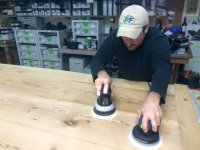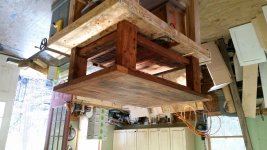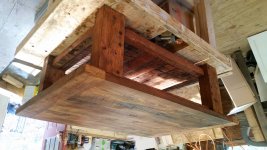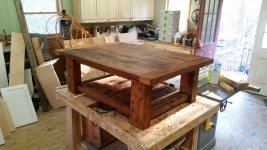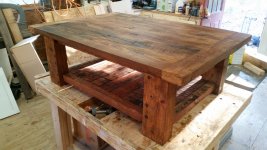Cabana Dan
Member
I apologize if this has been answered before. I searched but didn't find an answer.
I have a load of reclaimed pine (old growth) that has was the floor of a mill and in a barn (which both date to the early 1900s). I need to clean the wood and do not want to use something that would hamper my finishing efforts later. I have heard dish soap, just water and a steel brush, etc. Any recommendations?
I plan on a distressed finish, but haven't decided on it yet.
Thanks in advance.
Dan
I have a load of reclaimed pine (old growth) that has was the floor of a mill and in a barn (which both date to the early 1900s). I need to clean the wood and do not want to use something that would hamper my finishing efforts later. I have heard dish soap, just water and a steel brush, etc. Any recommendations?
I plan on a distressed finish, but haven't decided on it yet.
Thanks in advance.
Dan

